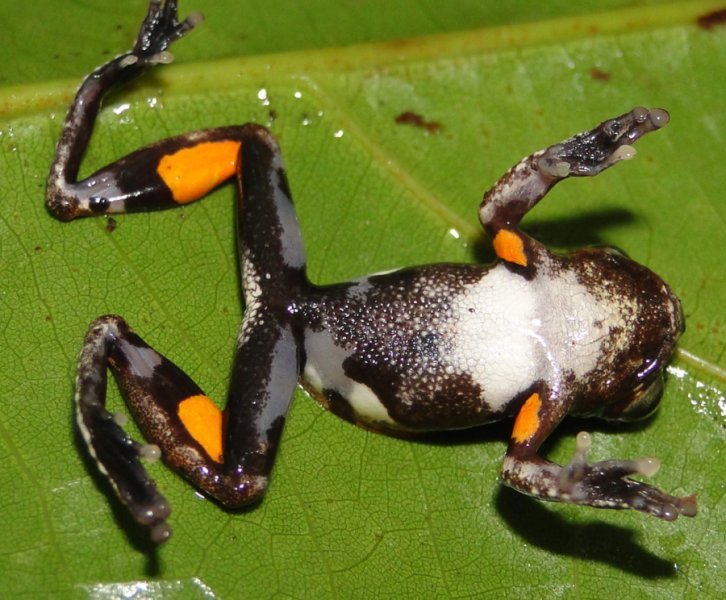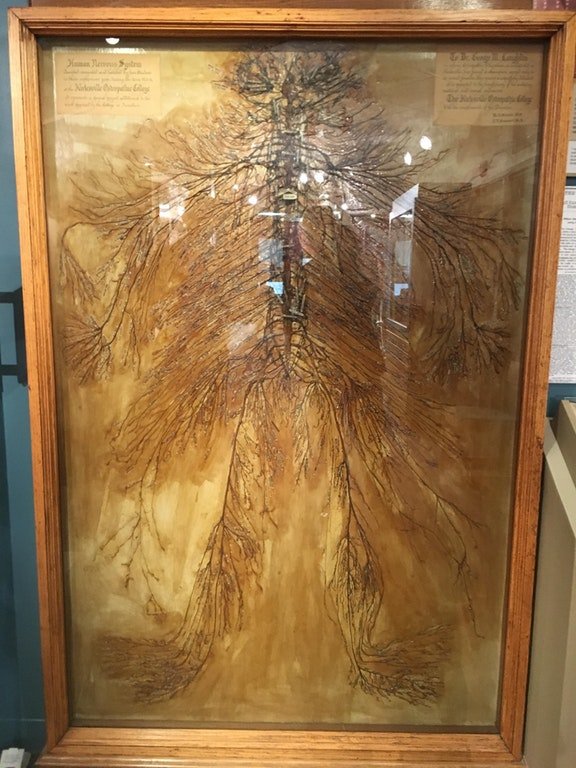You may have noticed that I have a thing for blogging about animals named after celebrities or fictional heroes and the reasons behind their bizarre naming. About two weeks ago, Stanley Kubrick joined the long list of people with animals named in their honor.
Scientifically described as Dendropsophus kubricki, the Kubrick's frog was described in a paper by researchers from the Ecuador's Catholic University (PUCE) and Peru's Centro de Ornitología y Biodiversidad (CORBIDI). The species occurs in the Amazon Basin of Bolivia, Peru, and Brazil.

The Kubrick's Treefrog (Dendropsophus kubricki) with the distinctive bright-orange stains (credit)
The paper actually describes two frogs, D. kubricki and D. kamagarini. Both of them were previously thought to belong to another, similar looking species, the Sarayacu treefrog, scientifically described as Dendropsophus parviceps. However, genetic, morphologic, and bioacoustic analysis showed clear distinctions between the now three distinct species.
But why was the new species named after the esteemed filmmaker? Well, the published paper isn't very specific:
"The specific name kubricki is a noun in the genitive case and is a patronym for Stanley Kubrick, an American filmmaker who is one of the most brilliant and influential film directors of all time. We dedicate this species to him for his legacy to film culture and science fiction."
However, in the corresponding press release the researchers go into more details:
The scientists remind that, back in 1972, when Anthony Burgess explained the title of his famous novel A Clockwork Orange, he said: "I've implied the junction of the organic, the lively, the sweet -- in other words, life, the orange -- and the mechanical, the cold, the disciplined (...)"
"Without knowing, he was also giving a good metaphor to describe ecosystems. Nature works as the interplay between life and its cold, mechanical, and disciplined physical matrix. Furthermore, both new frogs, scientifically listed as D. kubricki and D. kamagarini, are characterized by having a bright orange blotch on the shanks, reminiscent of the 'orange pieces of nature"
The scientific name of the other new frog, D. kamagarini, is also quite interesting:
The specific name kamagarini is a noun derived from the Matsigenka language, which means demon or devil (Snell et al. 2011). The Matsigenka language is spoken by the Matsigenka people who inhabit the highlands and lowlands of southeastern Peru, in the departments of Cusco and Madre de Dios. Judeo-Christian religions depict the demon as a human figure with horns. The species name is in allusion to the prominent horn-like tubercles on the upper eyelid of D. kamagarini.
Ok, enough with the frog talk! Ever wondered how complex the human nervous system is? If yes, well you are not the first one! This is a question that troubled many doctors and scientists since like forever. And here is one of the most impressive early efforts to depict it, back from the 1920s:

Human Nervous System Exhibit (credit)
In case you wonder, this is not a painting! Yes, it is an actual nervous system painstakingly removed piece by piece from top to bottom!
The exhibit was created by two medical students in Kirksville, Missouri, who started the dissection in the fall of 1925 and finished their work the next year after spending more than 1500 hours in total!
I doubt you care, but for the shake of history the names of these two heroes were M.A. Schalck and L.P. Ramsdell who back then were students at the Schalck and Ramsdell's class at the Kirksville College of Osteopathy & Surgery. Unfortunately, the donor will probably remain unknown for ever. Probably somebody whodied in prison or some poor sap, as these were usually the sources of cadavers back then.
According to Jason Haxton, director of the Museum of Osteopathic Medicine at A.T. Still University (ATSU) in Kirksville where the exhibit is on permanent display, the two students along with their classmates were instructed to dissect a human arm. However, their work was so detailed that they were chosen to dissect an entire body!
The two started from the body's brain stem, exposed the spinal cord and removed all surrounding tissues like skin, fat and muscle and protective tissue:
"After they cleared each nerve, they rolled them in cotton batting soaked in some kind of [unknown] preservative. So, as they worked their way down, there was just a mass of little rolls of cotton." said Haxton.
Today, there are 4 in total exhibits like this one in the world. Want to hang one on your wall? Expect to pay a hefty price! According to Haxton, this particular exhibit was valued at $1 million... 10 years ago! I am sure the price has gone way up since then! You can click here if you are curious and want to learn more about the backstory of this beautiful piece of.. art!
Ok, hope you weren't creeped too much! Here's a super cute video of two adorable round-eared elephant shrews to start your week with happy feelings:

